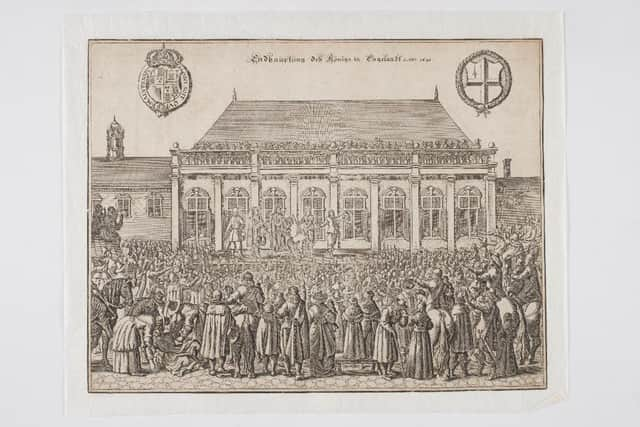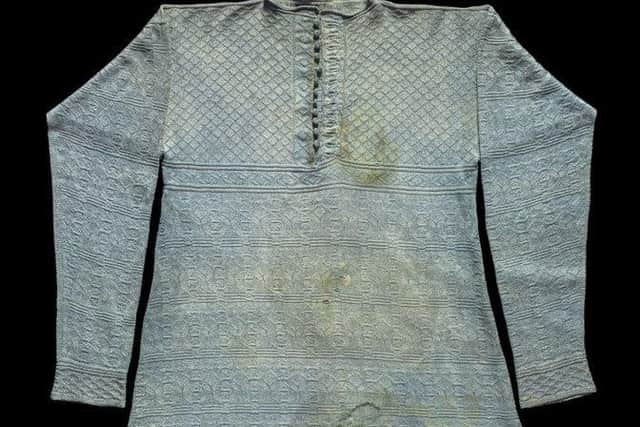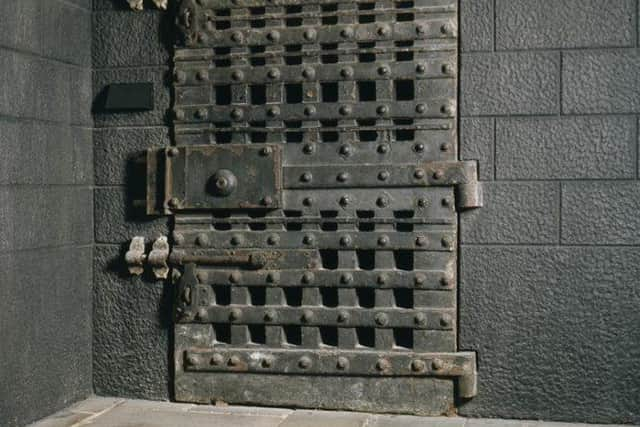The gruesome business of public execution put under the microscope


He was then hanged but not enough to die so that he was alive when executioners castrated him, cut out his entrails then his heart, beheaded him, burnt the entrails and then carved up his body, writes Andrew Southam.
They placed Wallace’s severed head on a spike at London Bridge and sent his other body parts to Newcastle, Berwick, Stirling and Perth, the cities he had scorched.
Advertisement
Hide AdAdvertisement
Hide AdThis was the gruesome practice of public execution revealed in spine-tingling detail at the London Museum of Docklands’ new exhibition, ‘Execution:700 years of public executions’.


Britain’s first recorded public execution occurred in 1196 and by 1723 was the punishment for 200 crimes popularly known as the ‘Bloody Code’ which included not only high treason but ‘taking away any maid, widow or wife’ or ‘maliciously cutting down any trees planted in any avenue or growing in any garden, or plantation’.
London was the most prolific execution location in Britain and the ‘bloodiest’ in Europe, most prominently at Tyburn, near Marble Arch, and then from 1783 outside Newgate prison.
Stomach-churning punishments awaited the convicted. Henry VIII introduced boiling alive for poisoners after cook Richard Roose poisoned the Bishop of Rochester’s porridge in 1531 – the bishop and his guests survived but two beggars given the food as charity didn’t. Roose was dipped up and down in boiling water for two hours at Smithfield until dead.
Advertisement
Hide AdAdvertisement
Hide AdTraitors and rebels like William Wallace tried killing themselves to avoid the agony of quartering. Fanatical Catholics who wanted to blow up Parliament in the November 1605 Gunpowder Plot received this gruesome sentence, which one conspirator Guy Fawkes didn’t feel as he jumped from the gallows to break his neck and died before being cut up. A fellow conspirator executed the same day tried but failed and suffered the disembowelling alive!


Burning had long been used to punish witches and heretics and was seen as a favour to women, which 18th century legal commentator William Blackstone put down to ‘decency due to the (female) sex (which) forbids the exposing and mangling their bodies’ – a likely possibility when struggling on a rope.
This fate befell Lincolnshire born Anne Askew who was one of the first women to try divorcing her husband in 1546 and fell out with the church for extreme protestant beliefs. She was tortured at the Tower of London on a rack which dislocated and tore her limbs so much that, when convicted of heresy, she had to be carried by chair to the Smithfield pyre for burning alongside two male martyrs.
Women were later spared this trauma from 1656 when they would instead be strangled to death before being burnt.
Advertisement
Hide AdAdvertisement
Hide AdBeheadings at Tower Hill were reserved for the privileged. This didn’t go well for James Scott, the Duke of Monmouth, who as the illegitimate son of Charles II led a failed rebellion against the catholic practices of James II and ended up facing incompetent executioner Jack Ketch. The duke asked Ketch to finish him in one go in July 1685, but the axeman failed in the task despite landing five blows and finally resorted to a knife after horrified spectators saw the duke still getting up. Tens of thousands of spectators attended all these public spectacles held eight times a year, which were a boon for pickpockets, prostitutes and food and drink purveyors who sold gin, potatoes and beef, mutton, eel and fruit pastries.


Large crowds also visited ‘gibbets’ from the macabre practice of tying the corpses of those who had committed crimes like murder, smuggling and piracy in body chains and suspended them on tall posts to rot for years. The decaying flesh proved a tourist attraction with spectators buying sausages and gingerbread while gazing at the remains until the practice was stopped in 1834.
Surgeons had been granted a supply of corpses for medical examination since Tudor times, which caused fights when a family tried to stop them claiming the criminal’s body. When demand outstripped supply in the 18th century, the 1752 Murder Act gave surgeons the bodies of executed murderers for public dissection, which the public paid to watch.
The body of Earl Ferrers who was hanged in 1760 for shooting dead his steward was not only the last peer to be hanged but the first peer to be dissected, being taken to Surgeons’ Hall in a satin-lined coffin, where a ‘great number of spectators’ came to watch the surgeons ‘anatomise’ him. His body was cut open and his bowels were removed though he was spared dissection on account of his nobility.
Advertisement
Hide AdAdvertisement
Hide AdExecutioners were neither skilful nor well paid though Richard Brandon, who inherited the job from his father Geoffrey, was an exception becoming London’s Common Executioner during the Civil War, earning £30 (£750,00 today) for beheading King Charles I in 1649.
Some were criminals themselves. Hangman John Price was arrested for debt on his way to perform an execution and later hanged in 1718 for killing a woman; and William Marvel, who’d also been arrested for debt when travelling to Tyburn, was convicted in 1719 of stealing ten silk handkerchiefs and transported to America.
William Calcraft was Britain’s most prolific hangman killing 400 people between 1829 to 1874. He doubled up as cobbler and extolled the short-drop method of execution, a three-foot fall that slowly strangled a criminal to death.
Changing attitudes eventually brought the gruesome spectacle to an end in the Victorian period. Calcraft performed the last public execution of Fenian Michael Barrett in 1868 for killing 12 bystanders when blowing up parts of Clerkenwell prison. Thereafter, capital punishment was carried out behind closed prison doors, with the last hangings on the same day in August 1964 at Manchester and Liverpool prisons of two murderers for killing a laundry driver. Visitors to the Docklands’ exhibition, which runs till March, can see a huge array of both grisly and compelling objects, many not shown before, telling this 900-year-old story. By the end, you’re reminded that in central London you’re never more than three miles - or 500 yards in the City of London - from a nightmarish execution site.
Details can be found at Executions (museumoflondon.org.uk) website.